Should it be considered a crime to be in one of the world's best culinary nations and to be on a liquid diet, not of margaritas but of raw green vegetable juice?
To make matters worse I was in Oaxaca, the Mexican state said to have the country's best food. But instead of sampling such delights as tamales with mole sauce, I got a green moustache four times a day from guzzling all manner of juiced superfoods.
I was in The Sanctuary, a ‘holistic healing retreat centre’, in the Mexican west coast surf town of Puerto Escondido. The Sanctuary is set in a beautiful mansion surrounded by a lush tropical garden with its own permaculture vegetable patch and is just a five minute stroll to the Zicatela beach. The centre is run by Englishman Pete Adams. Pete doesn't have a medical or nutritional background but offers a ‘supportive environment where healing can take place’. His inspiration for the centre came about when a close friend of his died of cancer and he began to research the importance of nutrition in the healing process.
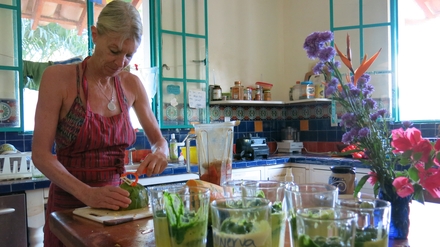
My trip to Mexico came at the end of ten months of travelling in Asia and North America during which I did my fair share of health retreats, including a seven day fast with daily colonic irrigation in The Sanctuary Thailand and a 14-day Panchakarma cleanse in India. But once I hit the United States I dropped the mantle of healthy living and succumbed to the allure and convenience of the American diet. Consequently I put on weight and didn’t feel so healthy.
While there is much controversy about juicing, I had heard first-hand, impressive stories of its benefits. So it seemed like an appropriate thing to do before I hit Mexico's bikini clad beaches. The proponents of juicing say the science is simple: raw food contains more nutrition than cooked food and if you juice these foods it’s the fastest and most powerful way for the benefits to hit your system. And that fasting from other food and only ingesting juice gives the digestive system a break and helps flush out your system.
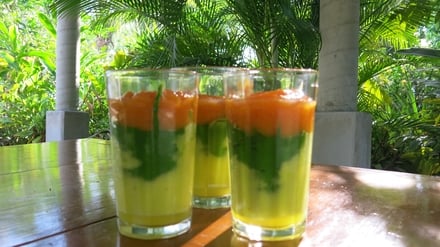
The first day of my new liquid diet started with an orientation around the kitchen and a brief in how to use the overly-complicated juicer. Pete showed me the large store of fresh vegetables and listed their health benefits. I was introduced to some unfamiliar locally grown vegetables such as hickama and the cactus nopal. Pete showed me where the Aloe Vera plants were growing in the garden and taught me how to carefully cut a leaf from a plant and juice it. In the past I’ve have spent a small fortune on Aloe Vera juice, so I got a kick out of picking it fresh and juicing it myself.
The Sanctuary feels more like a community home than a commercial venture - the prices are kept modest and it is largely run by volunteers. Most of the staff are on a work exchange programme whereby they work 25-hours per week in exchange for raw vegan meals and accommodation. The cost of their stay depends on how much time they volunteer. As a full paying guest I was expected to give one hour of work per day. The jobs included gardening, cleaning and food prep. Instead I opted to do my own juicing, which was time consuming but I had the added benefit of choosing exactly what was going into my juices.
The Sanctuary sleeps twenty people and all of my housemates weren’t fasting, but on a raw vegan diet. This made things a little more challenging as I lacked the moral support of other fasters and I was tempted by the delicious meals being prepared in the kitchen.
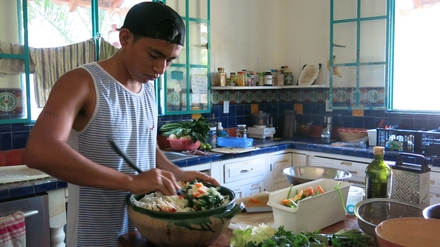
For the first three days of the fast I felt fairly rotten with headaches, dizziness and some nausea. But the household activities acted as a welcome distraction. The days were structured with the bell going off at 6am for morning meditation which was followed by a rooftop yoga class. Every afternoon there were talks and workshops on a variety of subjects including permaculture, raw cooking, shiatsu and holotropic breathwork. Many of the ideas bandied around were far from conventional. Some of which could be considered quite controversial, including Pete’s opinion on Western medicine. He wisely suggests not to ‘blindly follow my advice’ and encourages visitors to do their own research into his suggestions. The Sanctuary is not for everyone, especially those of a cynical or purely scientific mindset.
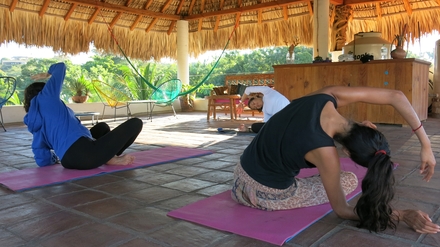
But even if these new ages ideas aren’t your cup of tea, Puerto Escondido has a lot to offer its visitors. Thankfully after my third day fasting I got more energy and spent most of my days relaxing with a book on the beach or watching some of the many surfers who came from all over the world to ride the monster tubes of the Mexican Pipeline, which is ranked among the world’s top surfing waves. There is also diving, snorkelling, sport fishing and dolphin and turtle watching on offer. At night there is a busy cafe and bar scene with many establishments offering live music. The surfers and the hippie types that hang around this coastline give the town a chilled-out and bohemian feel.
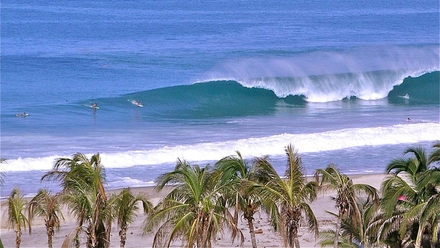
After seven days of fasting on raw juice I moved on to raw solids for two days. My first raw meal felt like I was at a royal buffet and I’ve never been so excited to eat salad.

My ten days in The Sanctuary were interesting; I was exposed to new idea’s which gave me food for thought and I managed to lose a few pounds. But once I left the confines of The Sanctuary I adopted the style of a true yo-yo dieter and enjoyed the delights that Oaxacan cuisine has to offer. This time my green liquid of choice was of a more traditional Mexican nature. On the rocks with salt please.
A ten-day juice detox retreat in a shared room cost approximately €536 or €634 for a private room en-suite. For more information on The Sanctuary visit www.healing-haven.com
Deirdre Mullins


